HE’S HAD HIS OWN EPONYMOUS RESTAURANT for more than a decade, but now Chef Michael Lachowicz is upping his game, making the claim that he’s opened the best French restaurant in the Chicago area. And it’s not the one that has his name on it.
George Trois is open Thursday through Sunday, serving a ten-course tasting menu to 20 diners each night. The sparsely decorated restaurant—closer to an intimate dining experience like 42 Grams or EL Ideas—is housed in the converted private dining room at Lachowicz’s existing Winnetka establishment, Michael. But otherwise, he says it’s an entirely separate concept: at George Trois, Lachowicz personally cooks and plates every dish for every diner four nights a week. He bills George Trois as “country French dining.” but the technique, intimacy and refined presentation are so much more than a country bistro.
There were a few opening announcements in local papers and mentions in the Tribune and Crain’s when George Trois opened, but few food writers in the city seem aware of it. I had a chance to dine at George Trois in early October, just a few days before they opened their doors during a friends and family preview. I’d eaten at Michael once or twice a few years ago when I lived in Evanston but neither meal was particularly memorable. This time was different though—I’ll admit I was impressed.
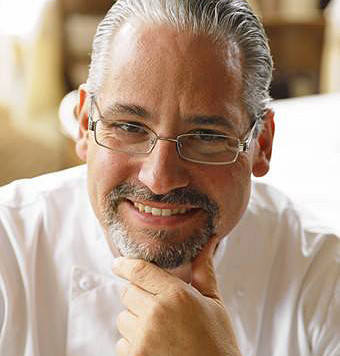
Chef Michael Lachowicz
Lachowicz spent years working under Jean Banchet and Roland Liccioni, and says he is now rediscovering French food in his own voice. These are bold words from a man who’s battled demons of addiction to drugs and alcohol in years past, but—maybe goaded by the praise for newer restaurants like The Blanchard—he seems newly motivated to show French food at a high level, and to show that he’s been here all along.
The meal begins earnestly with a bite of lobster medallion en gelée topped with caviar. Predictable, except for the yellow tomato coulis on the side that brightens up the lobster and wakes up my palate. The foie gras flight gives The Blanchard a run for its money—three petite preparations of foie include a pan-seared cube on truffle butter brioche, grilled foie over a potato tartlet and a chilled terrine with brandied cherries and toasted almonds. Each one represents a region of France—Perigord, Alsace and Burgundy—and the servings are just enough to savor in two bites each, allowing me to appreciate the variety of flavors without being overwhelmed by the quantity of foie.
A dueling meat course presents veal and venison on the same plate, the sumptuous morel cream and hunter’s sauces—what the French do best—separated by a line drawn in the sand, a crispy chickpea frite. Between bites of each, I declared a draw. I understand what Lachowicz means—there’s no mistaking this for anything other than a French restaurant, but not a single course bores me. I’ve had turbot many times before, but never with a crisp, orange flavored crust and curry sauce. Desserts are good, prepared by young pastry chef Stefán Markov, but almost a diminuendo after the savory courses.
The menu changes seasonally, with the full 10 course menu running at $160 before wine pairings; there is also a seven-course option for $140. I thought quite highly of my experience, and Lachowicz is quite certain you’ll be blown away too, with his confidence definitely teetering over the edge to arrogance in our conversation. Is Chicago ready for trash-talking French chefs? We may be about to find out.

Corn Custard
AMBER GIBSON: You’ve created a 20-seat fine dining restaurant in your former private dining room. How long have you had this idea for and what inspired it?
MICHAEL LACHOWICZ: I came up with the concept of George Trois four years ago when I built the additional room where there was originally parking lot. It was just the concept of a formal dining room at that point. The name George Trois developed in the spring of this year when I was away with my wife for a long weekend. I needed a name to define my inspiration for the room without involving my ego.
The name is inspired by my grandfather, George De Angeles and his son, my uncle, George De Angeles Jr. We lived in the apartment above my grandfather’s restaurant until I was six. I remember sitting with him peeling potatoes and talking until I fell asleep in the chair. He had a way of talking to you as if the two of you were the only ones in the room, regardless of who was there. He made me feel like I was important. That I mattered. My mom and dad were—and are—wonderful, supportive and loving parents. But I had a special bond with my grandfather that is difficult to explain. He could also cook with ease and comfort that seemed like second nature. A gift actually. I have that same gift. It came from him.
My demons are at bay but alive and well. They serve to drive me cautiously forward.
My uncle George was also a special man. He died very young, at the age of 41. It was tragic but he never let it look like that. He was incredibly strong and extremely intelligent. He spoke to me like I was a man when I was just a kid. He gave me respect before I knew it had to be earned. I cooked my first full meal with him for our entire family. Rack of lamb Dijonaisse. I was nine years old. He had me chop parsley until it turned black just so I could be with him and feel involved. He taught me how to teach someone to cook and pass on my knowledge to my cooks today.
It seems fitting that you’ve named this restaurant in their honor. Particularly after all that you’ve been through to get here. It’s no secret that you went through a dark period and it took you five years to get sober. Is George Trois a form of redemption for you?
I wouldn’t say George Trois is redemption for me. My demons are at bay but alive and well. That part of me lives separately but in tandem with my work today. Rather than destructive as in the past, they serve to drive me cautiously forward.
George Trois is a depiction of how things should be done in this style of cooking. It is a room of comfort, respect for tradition and attention to details that today’s cooks and restaurateurs find unnecessary and silly. It is a return to civilized dining where the focus is on what is presented to you as much as who is at your table with whom you are sharing it. It is quiet serenity with bursts of shockingly vivid flavors and refined atmosphere. It is designed to make you feel that it’s ok to shut off your phone, breathe slowly and enjoy as my team and I guide you through a lovely experience.
How do you define your style?
I am not a French chef. I am an American chef of Italian and Polish heritage. I cook in the structure and spirit of classical French cuisine, unapologetically. It is comforting for me to do so. Roland [Liccioni] is a French chef. Jean Joho is a French chef. Patrick Chabert is a French chef. Michael Lachowicz is classically French-trained and cooks with that in mind with every morsel I place on the plate. The media portrays classical French as “butter, butter cream. Cream, cream, butter, cheese.” This is incorrect and irresponsible in my opinion. Classic French training is about structure, method and technique. Just as in any other training in a specific cuisine.
To burden and slander it with this “unhealthy” label is ridiculous. We run the risk of having this type of cooking be lost on future chefs by having it devolve into this passé dinosaur. Not on my watch. I preach classic French structure, method, technique and training to all of those that pass through my kitchen just as those before me. I will continue to do so until I am no longer able or simply not willing to put in the effort. I am, after all, getting old!
You mentioned in October that you have a new sense of calm in your life now—you seemed literally buoyant as you introduced each dish. Yet, you also mentioned that you were scared you were getting older and not meeting expectations. Do you think you’re meeting those expectations now at George Trois?
The new sense of calm of which I have spoken is translated into confidence. I cook how I cook and I do it exceptionally well and with no apologies and no regrets.
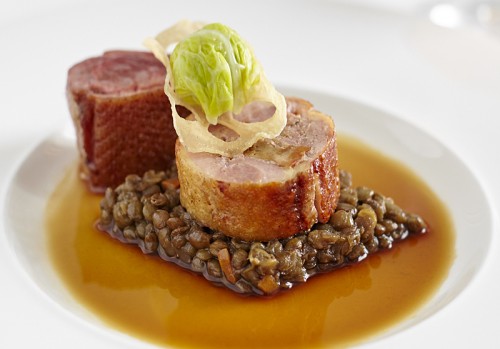
Duck and Hen
I stated that I was scared I’m getting older and of not meeting expectations indeed. But not of the critics or the dining public. I’m often haunted by my own unreasonable expectations of myself. I also strive very hard to make my wife proud. Lastly my staff. They deserve to have high expectations of me and what I’ve positioned us to be. And yes, when you dine at George Trois please have very high expectations and also expect to have them met. By me, personally. I don’t miss nowadays.
You’ve said that French cuisine doesn’t need to be reinvented but just rediscovered. What is a dish or two on the menu that you think best exemplifies this?
A dish that stands out head and shoulders above in regards to “French standards” is the roasted squab chartreuse. It is close to my heart and is from my early training. It’s a dish passed to me by Patrick Chabert, chef de cuisine for 20 years at Le Francais under both [Jean] Banchet and Roland [Liccioni]. It is a dish that highlights structure and proficiency in cooking. Showing our work as the craft that it is. We are not, contrary to popular beliefs, artists. If we are doing it correctly, we are craftsmen—and craftswomen, of course. Ask Carrie [Nahabedian] at Naha about that. She is a gifted chef who showcases her craft in each of her dishes. She’s one of my favorite cooks.
When you dine at George Trois please have very high expectations and also expect to have them met. By me, personally. I don’t miss.
But back to the squab. The chartreuse is comprised of lightly blanched leaves of savoy cabbage spread with a thin layer of fig puree and filled with chicken & truffle mousseline that holds in its center, a bit of foie gras mousse and squab leg confit. This is cooked at a low temperature in a water bath, chilled and wrapped in thin sheets of blanched carrot and leek. It is then tied with a string of leek and heated gently at service in a steamer while the roasted breast rests. The chartreuse and rare roasted breast are presented on the plate with a jus made from the roasted squab bones and a hint of juniper. The sauce is finished with a bit of fig syrup, a tiny nub of butter and a twist of freshly ground black pepper. A picture of structure and craft. This is not my dish. It is a dish that was handed down to me and I feel an obligation to hand it down to those that work with me, with great care and respect as I do so.
You’re personally preparing each of the savory courses, but I noticed quite a few young chefs on your team now, like pastry chef Stefán Markov. What are you learning from them and why is it important to have this youth in your kitchen?
I have a perfect mix of youth and experience in both the dining room and the kitchen now. Sergio in the front and Stefán in the kitchen standout not because they are more important than anyone else but more because they are excited by my vision and I feed off of that. It is awesome and invaluable to me as a chef.
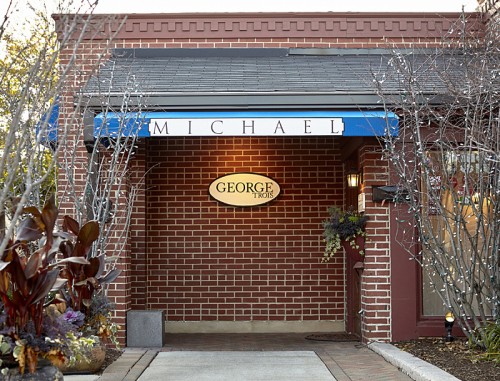
At Michael, 70 percent of your guests are North Shore locals. Do you hope George Trois will draw more diners from Chicago?
I believe George Trois will become a destination for those that crave true cuisine. The patrons I have entertained thus far have been awestruck without fail. And rightfully so. I have poured every ounce of my passion and skill into their happiness and enjoyment of the George Trois experience and will continue as such. I will state once again that nobody is presenting French cuisine as I am in all of Chicago. Period. Yes, I am familiar with The Blanchard and Chef Jason. There is no comparison. I have no further comment on that. My cuisine speaks for me.
Do you feel as though you’re overlooked and underappreciated by press or diners, because you are located in the North Shore?
Overlooked by press? Yes. By diners? Not in the least. I feel cherished and appreciated by my guests and I cherish them all gratefully. As for reasons that I feel I’m overlooked to a certain degree by press, I think I will take the lion’s share of the blame for that. I was quite a bit off the path for about 6 or 7 years regarding my business and my restaurant. I can’t complain. I’m fortunate and blessed to be allowed to still have my restaurant through that time with almost all of its original team in place. I have much to prove to the media. So my invitation is open to you all. Come in to eat and please allow me to show you what it looks like today. I am cooking at the highest level in my career. I’m proud to say I’m inspired by the dedication of my staff every day, all day. This is truly a team effort in which I happily participate.
When she’s not eating all the dessert in Chicago, Amber Gibson travels the world as a freelance writer for Four Seasons Magazine, Saveur, Departures, Hemispheres and American Way. You can follow her world travels on Instagram @amberyv and Twitter @ambergib.
Latest
Join the Discussion
After you comment, click Post. If you're not already logged in you will be asked to log in or register with Disqus.




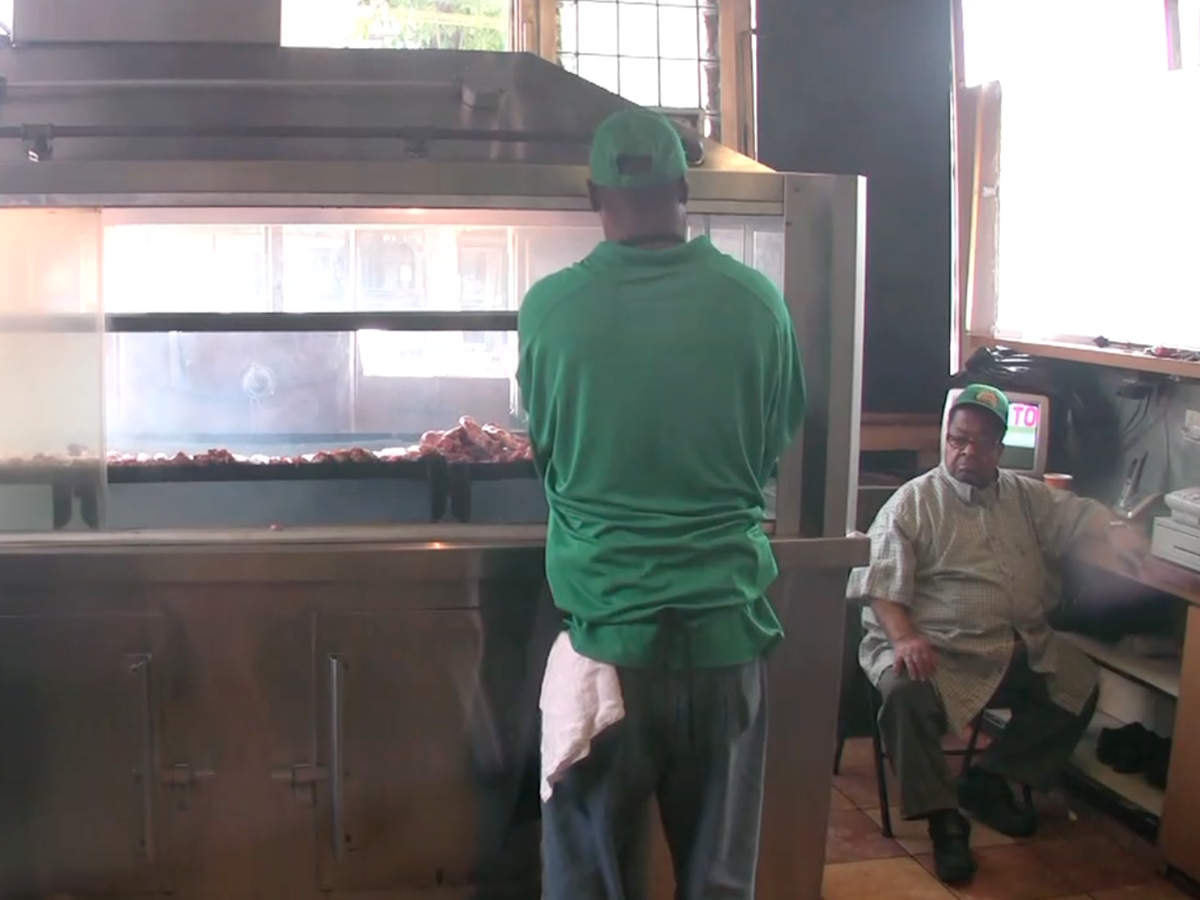
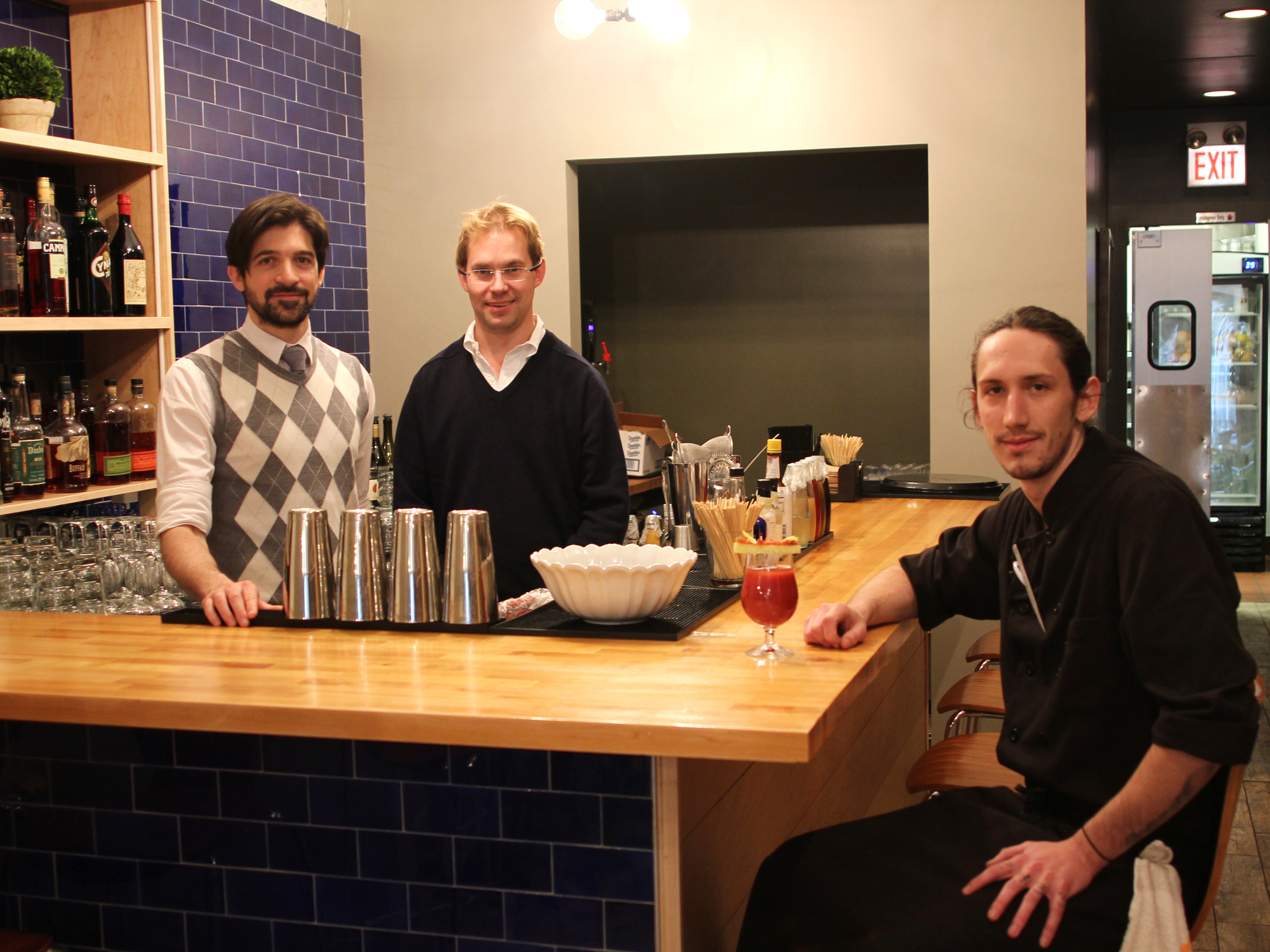
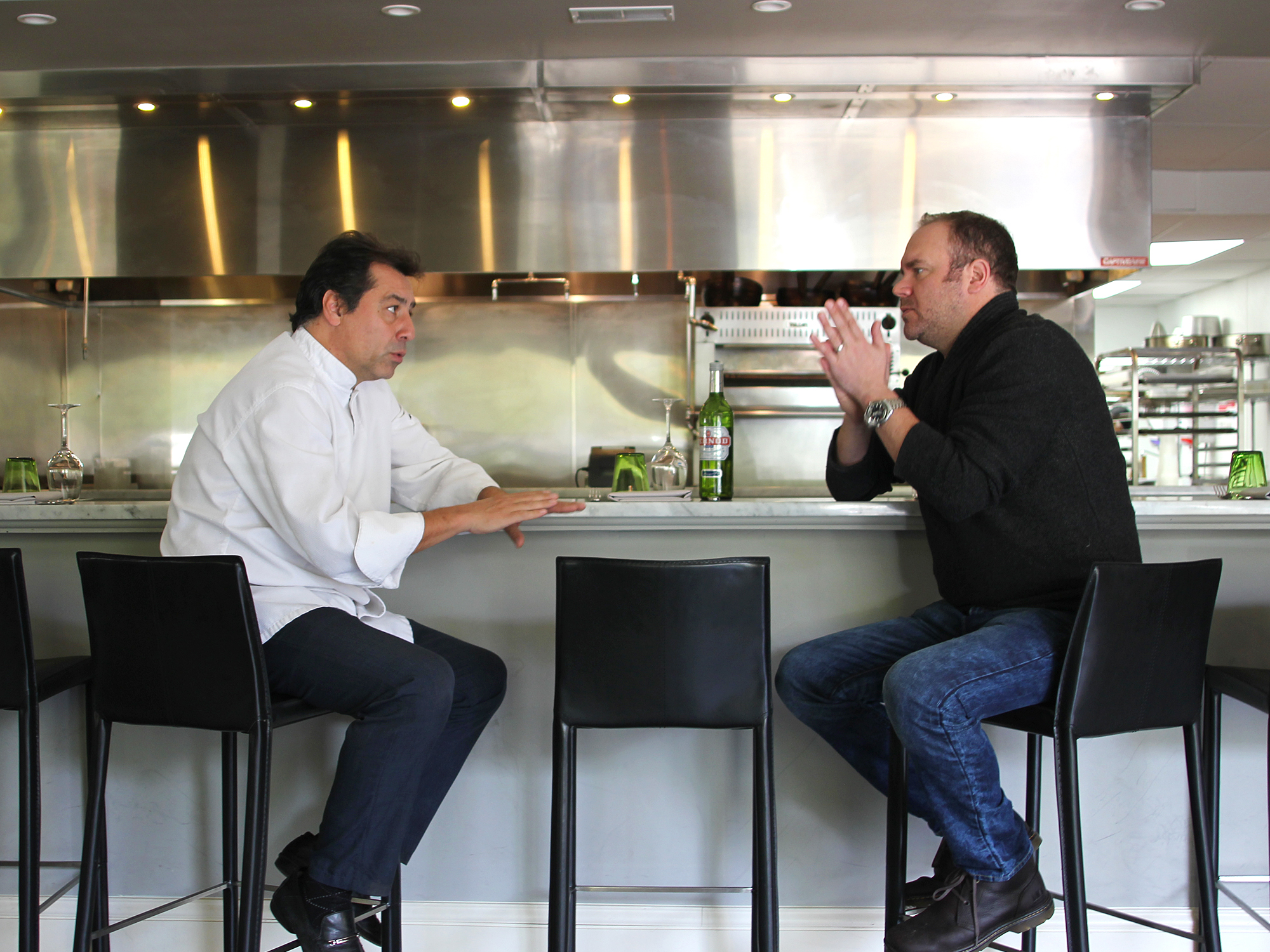
[…] READ MORE HERE […]